DUNU Vulkan Review: Mildly Simmering
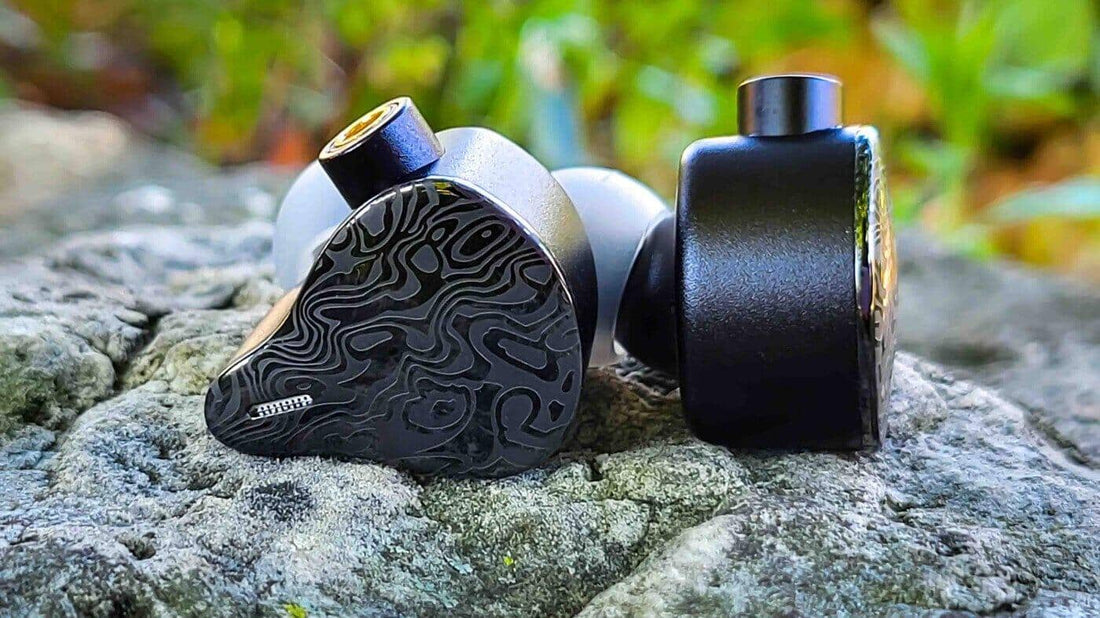
Dunu Vulkan Review
Loaner unit provided by DUNU
Introduction
DUNU is no stranger to the IEM scene. Though overshadowed in the West in past years, they’ve recently released a number of interesting IEMs to varying degrees of success. Across the product stack, some of the more notable ones are the $80 Aria competitor DUNU Titan S, the excellent $550 DUNU SA6, and the eccentric single Beryllium DD flagship, the DUNU Luna.
Now for their 20th anniversary, DUNU is once again aiming for the mid-fi market with the release of the $380 DUNU Vulkan. Sporting a 2 DD + 4 BA setup, the Vulkan hopes to bring DUNU a competitive edge in an era of immense competition for the price/performance crown. Time to see if it’ll stand its ground.
- Product Summary
- Accessories
- Frequency Response and Tonality
- Instrument Notes
- Presentation
- Conclusion
DUNU Vulkan - Product Summary
- Reasons to buy
- Warm-Neutral Tuning
- Tame Treble
- Great Accessories
- Reasons not to buy
- Slightly-Off Tonality
- Blunted Bass
- Average Technical Performance
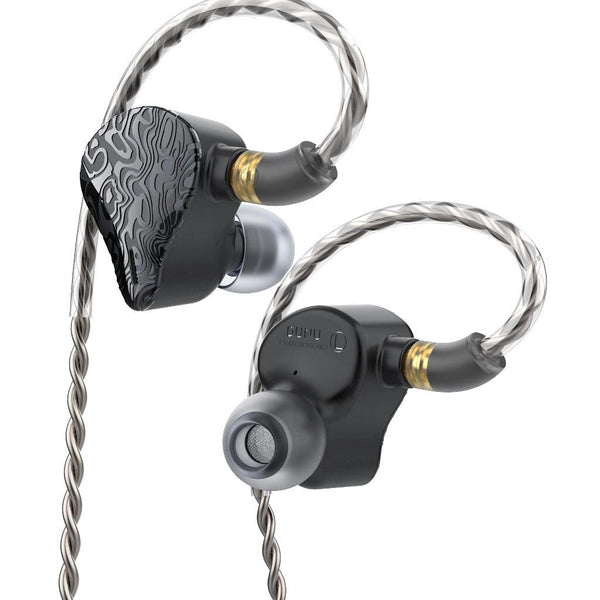 |
Get the Dunu Vulkan for the best available price at headphones.com. |
What’s in the Box
As in DUNU tradition, the accessory set is generous. You get three sets of S/M/L tips in different styles, a carrying case, an airplane and 6.3 mm adapter, cleaning brush, and a modular DUNU cable with 2.5/3.5/4.4 mm termination options. The cable is a 4-core MMCX cable with very solid jacks unlike most MMCX cables. It has pre-molded earhooks without the memory wire. It’s very pliable and quite light though I do think the sheathing is a little rubbery feeling and there is some cable noise. I like it.
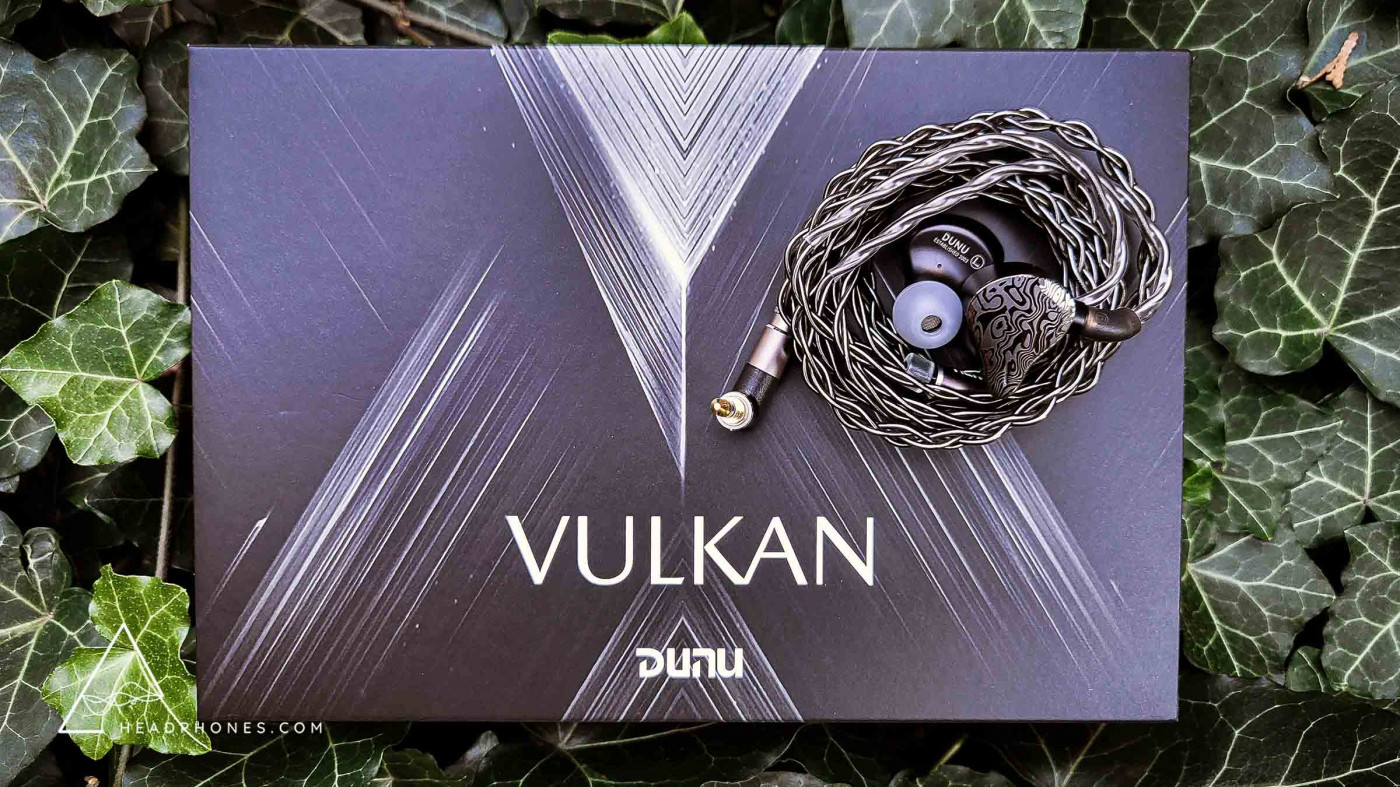
The Vulkan’s shell is ergonomically shaped and made of solid aluminum. The faceplate has a Japanese mokume gane inspired styling to achieve a metallic woodgrain look. There is a large vertical vent on the back for the dynamic drivers and a smaller vent on the inner face of the shell just above the nozzle. These two vents help alleviating the pressure buildup when in ear. The nozzle is on the larger side at 6 mm in diameter but overall, the Vulkan is a fairly comfortable IEM.
Frequency Response and Tuning
My initial impression of the Vulkan was not very positive. It’s on the warmer side with an elevated bass response but honestly, it mostly sounds like trying to be neutral but is distinctly off in some way. It’s almost as if you went in expecting Coke but ended up drinking Pepsi (for illustration purposes only. Fc-Construct neither prefers Coke or Pepsi and advocates drinking water instead). With a little bit of brain burn-in it does become a lot better, though the tonality still has a slight off-ness to it.
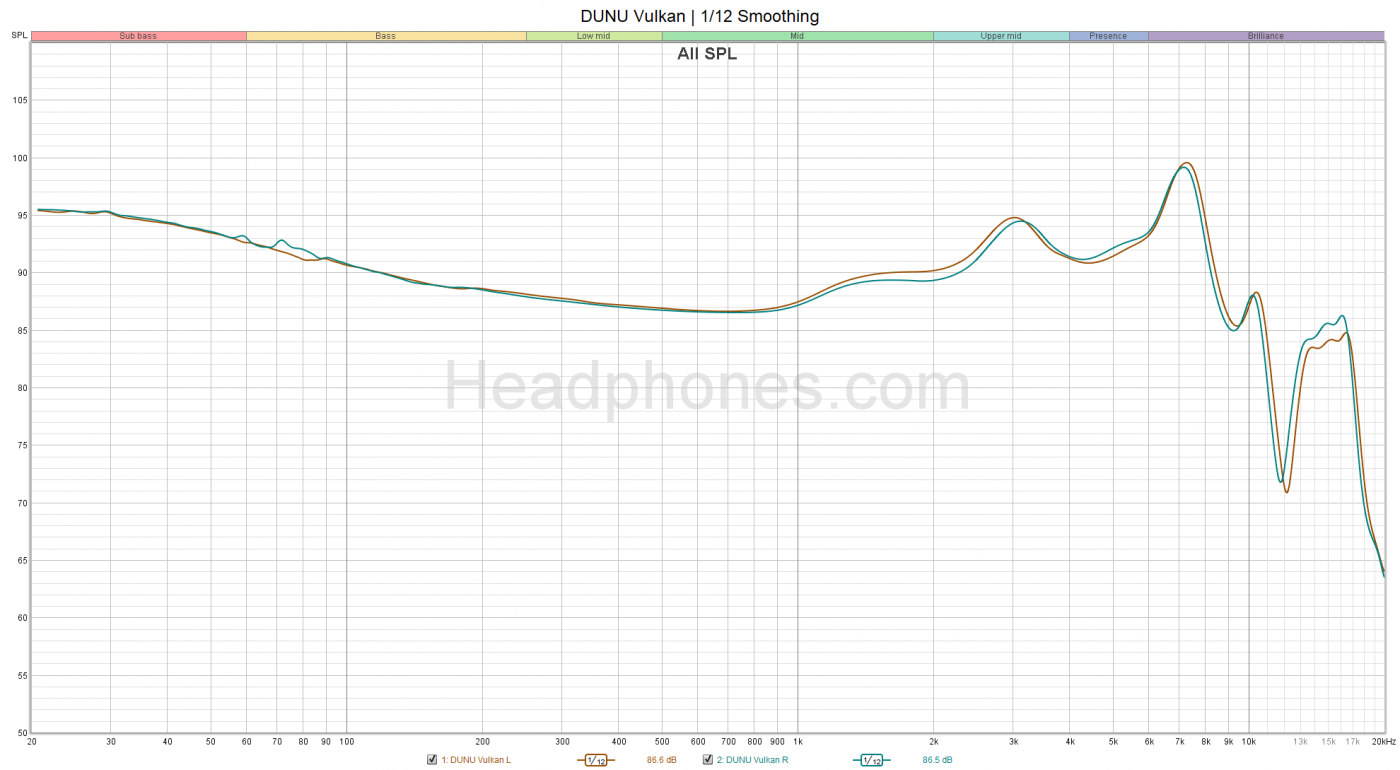
Frequency response of the DUNU Vulkan. Measurement taken with an IEC-711 clone microphone. Comparisons can only be made relative to other measurements taken by this specific microphone. A peak at about 8 – 10 kHz is likely an artifact of the measurement rig and may not exist as depicted here. Measurements above 8 kHz are not accurate. If possible, reference multiple measurements.
From the graph, you can see how the Vulkan emulates a neutral tonality. You have your standard bass shelf and pinna peak with a 3 kHz. The warmth in its sound comes the low-end elevation and the modest upper mids around 1 – 2 kHz. The 3 kHz peak gives vocals clarity and presence to offset that warmth.
Normally I don’t pay much attention to the 8 kHz peak because that is often an artifact of the measurement rig and it’s hard to know exactly what’s going on. But in this case, I’m quite certain there is peak somewhere around 7 kHz or so. This, coupled with a relative lack of upper treble brilliance around the 10 – 12 kHz region to my ear, is what I think gives the Vulkan its slightly “off” sound. Interestingly, I don’t find the peak to be fatiguing at all. It’s not something I readily notice as being peak-y or sharp per se, but rather I hear it in how it disrupts the timbre of certain instruments.
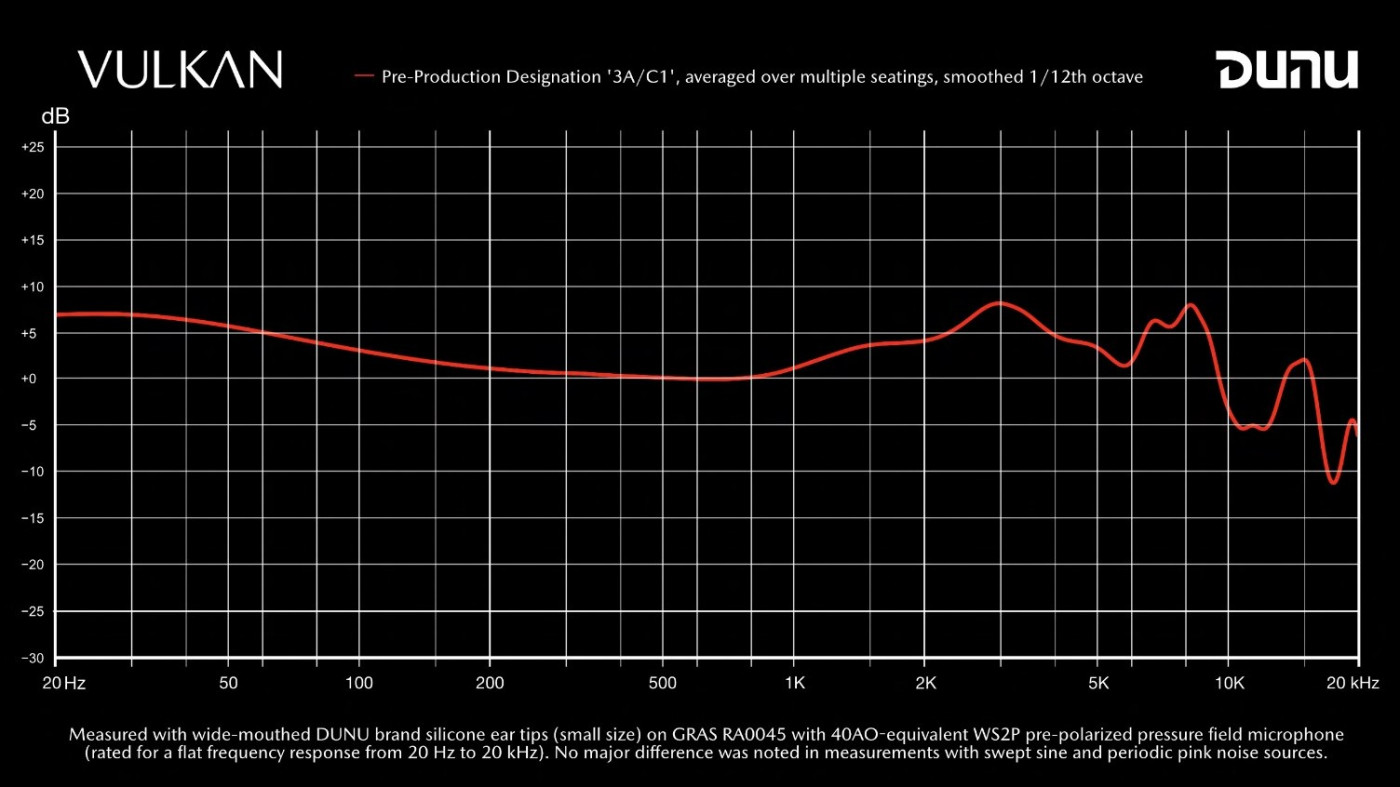
This is the graph of the Vulkan that DUNU themselves have provided in their marketing materials. While I typically don’t refer to manufacturer’s measurements, DUNU is one of the few companies that provides high quality graphs and I feel comfortable referring to it. While comparisons must be taken with a grain of salt given different measurement setups, we can see that it’s quite consistent with my own graph.
In particular we can now see that the 7 kHz peak is resolved and separated from the 8 kHz one. The peak isn’t as large as mine which makes sense to me given how the peaks are now split. It also tracks with the fact that I don’t find the Vulkan overly sharp or peaky. While DUNU’s graph shows some upper energy, it isn’t as prominent as seen here.
Instrument Notes
Drums
The bass of the Vulkan is unfortunately lacklustre and that is most heard in the drums. While there is a sense of weight in certain tracks thanks to the generous bass elevation, there isn’t much slam. The kick drum is thump-y and blunted while the toms lack a deep, resounding body behind their oomph. I’m not sure what’s causing this in the Vulkan as it graphs quite well in the bass. As a result, drums on the Vulkan end up sounding superficial and somewhat one-noted.
Hats and cymbals on the Vulkan are quite tame. There is the initial stick impact but beyond that, the percussion doesn’t sing. There is a deadening effect in the way the hats and cymbals ring out on the Vulkan. The notes are technically there but they aren’t expressive in a way that brings musicality. Treble brilliance is lacking on the Vulkan.
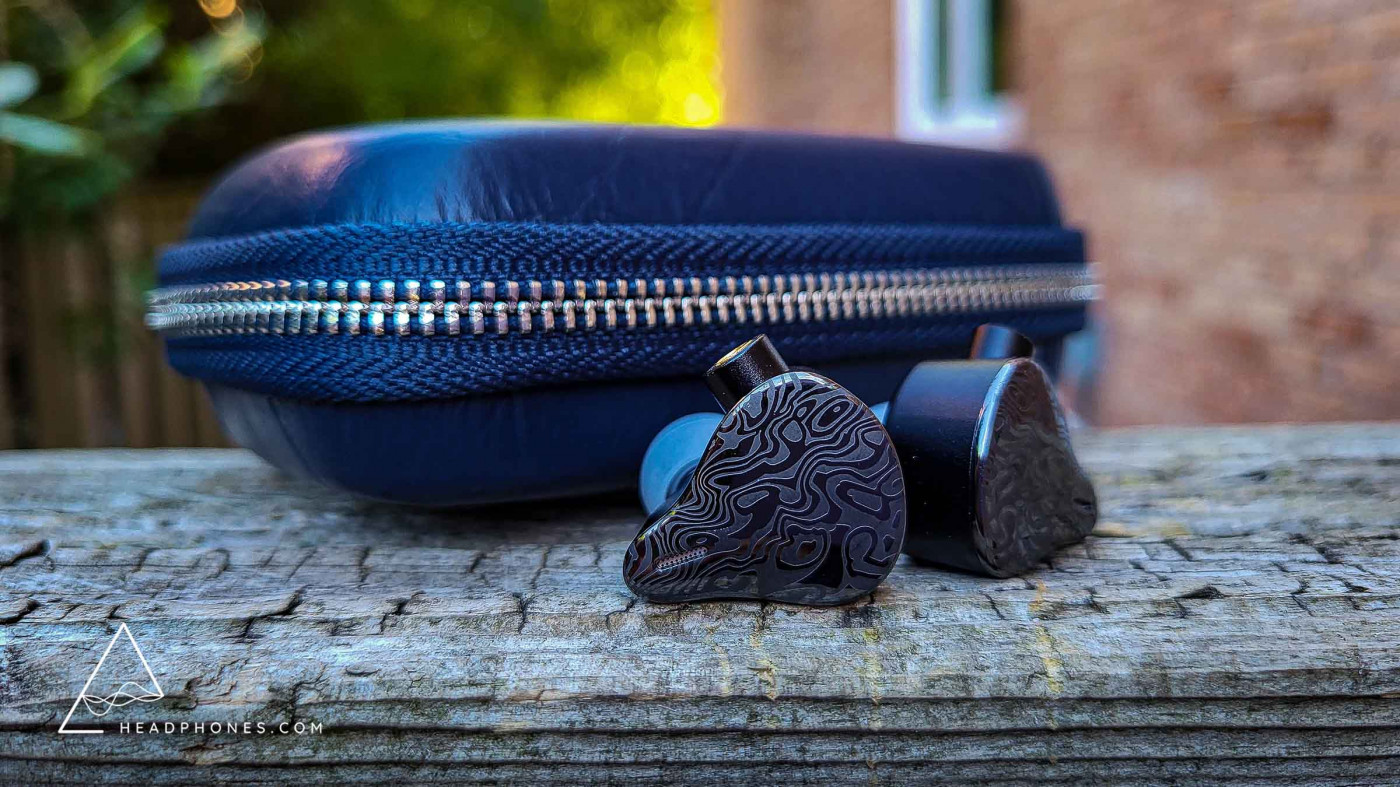
Guitars/Strings
In general, I have no real complaints with any stringed instruments. Cellos have a nice depth of body. Acoustic guitars could use a little more sharpness and definition in strumming and picking but that’s a minor nitpick. Electric guitars lean towards a bodied tone more suited for rhythm guitar rather than the piercing voice of the lead. Like the acoustic guitar, the bass guitar would benefit from tighter definition to make it stand out in tracks. You can definitely hear how it creates a bass foundation for the music to develop upon but as an individual instrument, it doesn’t get much of a chance to show off its own character.
Vocals
Vocals on the Vulkan are decent. Male and female vocals perform equally well and there’s a warm tint to their tonality. Vocals are centered and cleanly separated from the mix. Backing harmonies are nicely blended in. Sibilance and harshness isn’t an issue for me at all. My only complaint is that the vocals could use more air and presence in the treble to give them a greater sense of vividness to better engage the listener. It’s a bit like a veil is restraining the full range of the vocals to maintain a laid-back feeling. Of course, my nitpicks are a matter of preference and I know many people do prefer a more relaxed vocal performance.
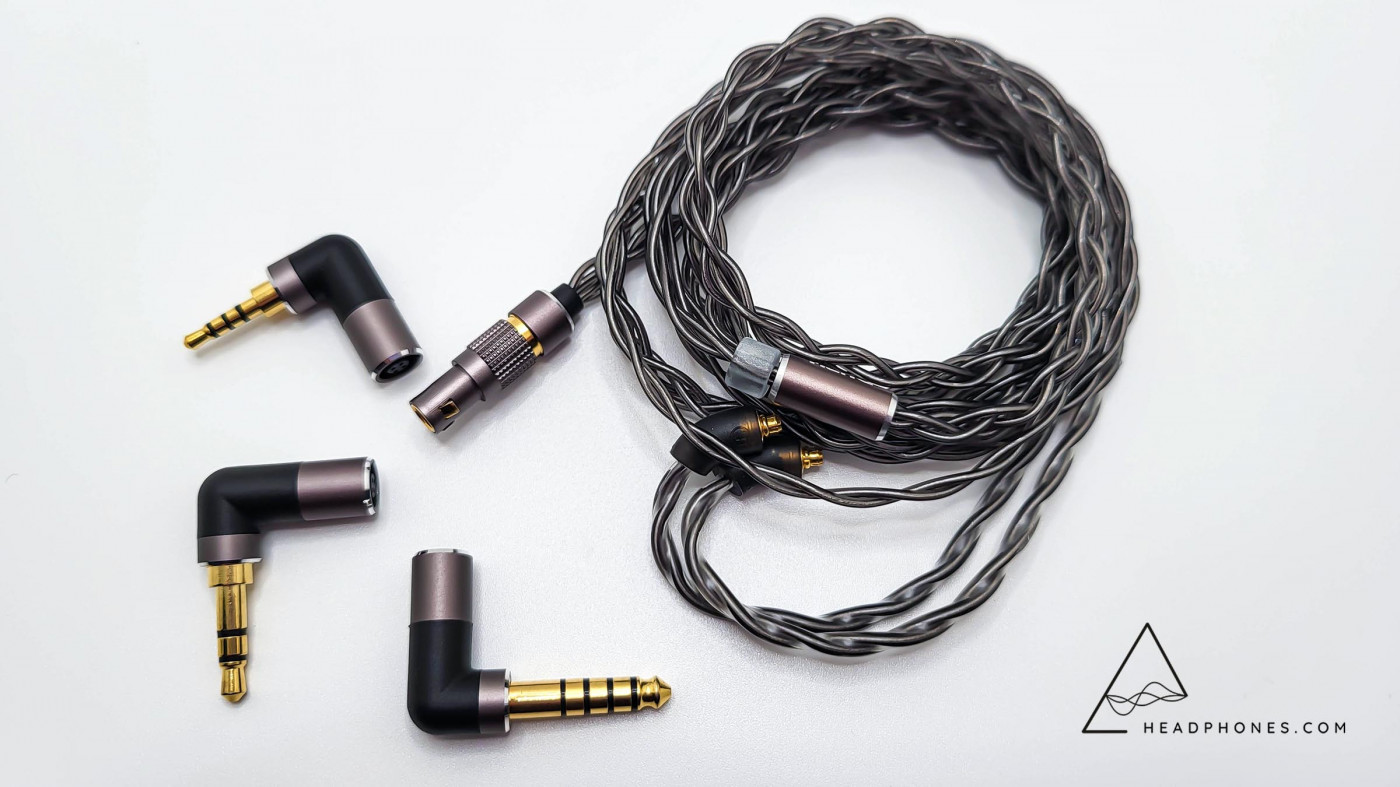
Love our in-depth reviews?
We test and review hundreds of headphones every year. Sign up to get the latest news, reviews, guides, and more in your inbox. Join the 60,000+ like-minded audio lovers who love our newsletter!
Presentation
The Vulkan is not a very technical IEM. Staging is fairly average. Soundstage has the in-your-head feeling with good stage width but little height or depth. Imaging has some level of nuance to place instruments beyond the standard left-right-center. Instrument separation is fair; instruments have adequate space to play in without running into each other. The limited stage depth does diminish the layering effect of the Vulkan. Overall, there is good coherency on Vulkan – nothing sounds disjointed in its presentation.
Resolution is adequate but for the price, I do expect more. Dynamics is an interesting point with the Vulkan. On one hand, there is a physicality that comes with its bass elevation. On the other, this physicality lacks character. It’s more of a large mass that moves air rather than representing musicality as transients and definition are strained. Beyond the bass, dynamic contrast is a little flat. Soaring choruses aren’t as lofty as I’d like. Another unique note in the Vulkan is its texture. There’s a subtle grain behind the sound and isn’t effortlessly smooth. I don’t think its an effect that’ll make someone fall in love or hate the Vulkan. It's more of a small quirk of its sound.
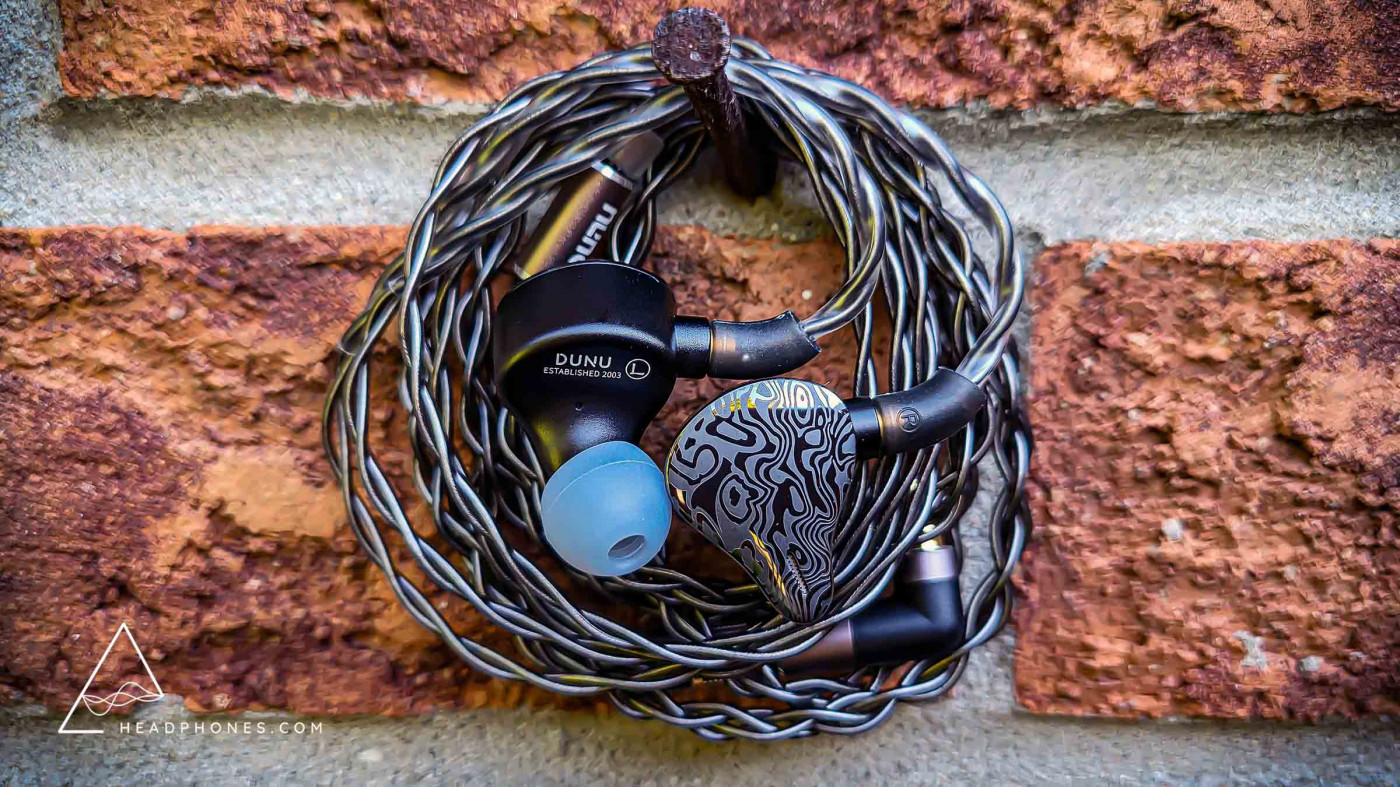
Should You Buy It?
Not really. I’ll admit that I’m a little biased towards DUNU as a company as I’ve had excellent interactions with them in the past. But the DUNU Vulkan isn’t a very competitive IEM for me. If you specifically know that you want a warmish, neutral sound with a sizable bass elevation, the Vulkan is definitely worth considering. But for the general audience without a strong preference, I think you’ll be better off with the standard recommendation of the MoonDrop Blessing 2: Dusk or some of the newer planar IEMs such as the 7Hz Timeless. Ultimately, the Vulkan doesn’t meaningfully distinguish itself in the IEM market. The tuning is decent but uninspired. Technical performance is middling at best. It has a great accessory set but those are add-ons rather than the main attraction. It’s not a bad set by any means but not one that’ll be top of mind when it comes to recommendations at its asking price of $380.
- Fc-Construct
